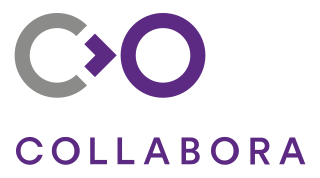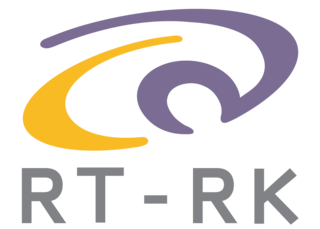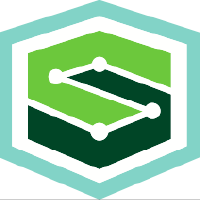Related Research Articles
Wind River Systems, also known as Wind River, is an Alameda, California–based company, subsidiary of Aptiv PLC. The company develops embedded system and cloud software consisting of real-time operating systems software, industry-specific software, simulation technology, development tools and middleware.

The PSA Group, legally known as Peugeot S.A. was a French multinational automotive manufacturing company which produced automobiles and motorcycles under the Peugeot, Citroën, DS, Opel and Vauxhall brands. On 18 December 2019, PSA and Fiat Chrysler Automobiles (FCA) announced that they had agreed to the terms of a binding $50 billion merger. On 16 July 2020, both companies announced the new name for their merged operations, Stellantis. The deal closed on 16 January 2021. Stellantis is now the third largest automotive manufacturing company, behind Volkswagen and Toyota.
AUTomotive Open System ARchitecture (AUTOSAR) is a development partnership of automotive interested parties founded in 2003. It pursues the objective to create and establish an open and standardized software architecture for automotive electronic control units (ECUs). Goals include the scalability to different vehicle and platform variants, transferability of software, the consideration of availability and safety requirements, a collaboration between various partners, sustainable use of natural resources, and maintainability during the product lifecycle.

Solex is a brand name owned by a subsidiary of Italian automotive parts manufacturer, Magneti Marelli. The original Solex company was French-owned and produced carburetors and gasoline powered bicycles.

Blue&Me is an integrated in-vehicle infotainment system used worldwide on many vehicles marketed by Fiat Chrysler Automobiles (FCA) from model years 2006–2017. With the exception of the Ford Ka, which is a lightly modified Fiat 500, the system is exclusive to Abarth, Alfa Romeo, Fiat and Lancia cars and to Fiat Professional's light commercial vehicles
In the automotive industry, the term Big Three is used for a country's three largest motor vehicle manufacturers, especially indicating companies that sell under multiple brand names.

In-car entertainment (ICE), or in-vehicle infotainment (IVI), is a collection of hardware and software in automobiles that provides audio or video entertainment. In car entertainment originated with car audio systems that consisted of radios and cassette or CD players, and now includes automotive navigation systems, video players, USB and Bluetooth connectivity, carputers, in-car internet, and WiFi. Once controlled by simple dashboards knobs and dials, ICE systems can include steering wheel audio controls, handsfree voice control, touch-sensitive preset buttons, and even touch screens on higher-end units. Latest models of In-car entertainment systems are coming equipped with rear-view cameras along with side cameras for better safety.

Selespeed is the name of an automated manual transmission used in Alfa Romeo cars, developed by Italian company Magneti Marelli and made by Graziano Trasmissioni.
The mobileGT name refers to both a computing platform and an alliance of vendors in the navigation, infotainment and telematics industries. It focuses on automotive, industrial and consumer electronics based on PowerPC and Power ISA processors. The mobileGT Alliance was initiated by Motorola in 2000 and consists today of an array of members from different disciplines like RTOS, middleware, software, graphics, audio, wireless, navigation and development tools. mobileGT solutions can be found in in-car entertainment and informatics systems from many car manufacturers such as BMW, Ford, General Motors, Hyundai and Mercedes-Benz, but can also be found in computing platforms like the EFIKA.

Collabora is a global private company headquartered in Cambridge, United Kingdom, with offices in Cambridge and Montreal. It provides open-source consultancy, training and products to companies.
TACO Faurecia Design Center Pvt. Ltd. (TFDC) was an Indo French engineering design company. It was a 50:50 joint venture between Tata AutoComp Systems Limited (TACO) of India and Faurecia Automotive Holdings of France. It provided automotive components design services exclusively to Faurecia.

MeeGo is a discontinued Linux distribution hosted by the Linux Foundation, using source code from the operating systems Moblin and Maemo. Primarily targeted at mobile devices and information appliances in the consumer electronics market, MeeGo was designed to act as an operating system for hardware platforms such as netbooks, entry-level desktops, nettops, tablet computers, mobile computing and communications devices, in-vehicle infotainment devices, SmartTV / ConnectedTV, IPTV-boxes, smart phones, and other embedded systems.
A connected car is a car that can communicate bidirectionally with other systems outside of the car (LAN). This allows the car to share internet access, and hence data, with other devices both inside and outside the vehicle. For safety-critical applications, it is anticipated that cars will also be connected using dedicated short-range communications (DSRC) or cellular radios, operating in the FCC-granted 5.9 GHz band with very low latency.

RT-RK is a Serbian R&D company and national research institute that delivers development services and own products in the arena of real time embedded systems, with focus on consumer electronics and automotive industry. Headquartered in Novi Sad, with offices in Belgrade, Banja Luka and Osijek (Croatia) with over 550 engineers, RT-RK is one of the biggest development houses in Southeast Europe.
Franca Interface Definition Language is a formally defined, text-based interface description language. It is part of the Franca framework, which is a framework for definition and transformation of software interfaces. Franca applies model transformation techniques to interoperate with various interface description languages.
MirrorLink is a device interoperability standard that offers integration between a smartphone and a car's infotainment system.

SmartDeviceLink consists of two distinct software elements: a core automotive piece which wraps in-vehicle services and integrates to the in-vehicle HMI, and a mobile proxy, which executes APIs to access and use services on the automotive head unit.

Android Automotive is a variation of Google's Android operating system, tailored for its use in vehicle dashboards. Introduced in March 2017, the platform was developed by Google and Intel, together with car manufacturers such as Volvo and Audi. The project aims to provide an operating system codebase for vehicle manufacturers to develop their own version of the operating system. Besides infotainment tasks, such as messaging, navigation and music playback, the operating system aims to handle vehicle-specific functions such as controlling the air conditioning.
The eSync Alliance is a global automotive initiative established to build a secure, multi-vendor platform for end-to-end over-the-air (OTA) updating and data services for the connected car, with a global network of participating suppliers
Internet of vehicles (IoV) is a network of vehicles equipped with sensors, software, and the technologies that mediate between these with the aim of connecting & exchanging data over the Internet according to agreed standards. IoV evolved from Vehicular Ad Hoc Networks and is expected to ultimately evolve into an "Internet of autonomous vehicles". It is expected that IoV will be one of the enablers for an autonomous, connected, electric, and shared (ACES) Future Mobility.
References
- 1 2 3 4 5 6 Wuelfing, Britta (3 March 2009). "CeBIT 2009: BMW and Partners Found GENIVI Open Source Platform". Linux Pro Magazine. Retrieved 21 November 2011.
- 1 2 3 "GENIVI: moving an industry to open source". lwn.net. August 8, 2012. Retrieved August 17, 2023.
- 1 2 "GENIVI Alliance rebrands as Connected Vehicle Systems Alliance". Telematics Wire. 6 October 2021. Retrieved 22 July 2022.
- ↑ Brown, Eric (January 5, 2016). "Automotive Grade Linux group releases unified IVI spec" . Retrieved August 17, 2023.
- ↑ Lee, Chaeyeong; Kim, Moonbeom; Seo, Hyewon; Paek, Jeongyeup (October 17, 2022). "Survey on Integrated Vehicular Platforms for Next Generation Mobility". pp. 834–838. doi:10.1109/ICTC55196.2022.9952950 – via IEEE Xplore.
- ↑ Hammerschmidt, Christoph (October 6, 2021). "Genivi becomes Connected Vehicle Systems Alliance". EENews Europe. Retrieved August 17, 2023.
- ↑ Aust, Stefan (October 17, 2022). "Vehicle API and Service Catalog for Next Generation Mobility". pp. 418–423. doi:10.1109/WPMC55625.2022.10014905 – via IEEE Xplore.
- ↑ Kenjić, Dušan; Antić, Marija. "Connectivity Challenges in Automotive Solutions". IEEE Consumer Electronics Magazine. 12 (5): 53–59. doi:10.1109/MCE.2022.3183807 – via IEEE Xplore.
- ↑ Ashutosh, Ashish; Gerl, Armin; Wagner, Simon; Brunie, Lionel; Kosch, Harald (January 17, 2023). "XACML for Mobility (XACML4M)—An Access Control Framework for Connected Vehicles". Sensors. 23 (4): 1763. doi: 10.3390/s23041763 – via www.mdpi.com.